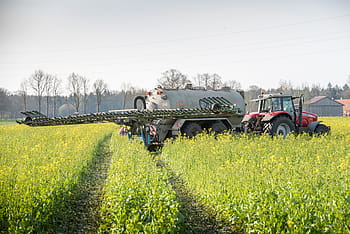Maximize Yield, Top Crop Rotation Strategies

Boost Your Harvest: Mastering Crop Rotation Strategies for High Yield Gardens
Ever felt like your garden's productivity is stuck in a rut? Like no matter how much you nurture it, your yields remain lackluster? It's time to give your garden a shake-up with the power of crop rotation strategies. This isn't just about moving plants around for fun; it's a serious game-changer for your garden's health and productivity. Let's dive in!
Why Crop Rotation? The Soil Management Secret
Think of your garden soil as a delicate ecosystem. It's teeming with life, from microscopic bacteria to earthworms, all working together to keep your plants healthy. But this ecosystem can get tired and run-down, just like any other. That's where crop rotation comes in. It's like giving your soil a vacation, a chance to recharge and rebuild.
Crop rotation helps manage soil nutrients, prevents pest and disease buildup, and promotes a healthy, balanced ecosystem. It's a key practice in organic farming and sustainable gardening, and it's a must-know for anyone serious about yield optimization.
The Basics: Plant Families and Their Needs
Before we dive into specific strategies, let's get to know our plant families. Plants have different nutritional needs and attract different pests and diseases. Grouping them based on these factors is the first step in effective crop rotation.
- Legumes (like beans and peas) fix nitrogen in the soil and attract fewer pests than other families.
- Brassicas (like cabbage and broccoli) are heavy feeders and attract a wide range of pests and diseases.
- Alliums (like onions and garlic) are light feeders and can help deter pests.
- Solanaceae (like tomatoes and potatoes) are heavy feeders and attract a specific set of pests and diseases.
Crop Rotation Strategies: The 4-Year Plan
Now, let's get to the nitty-gritty. Here's a simple yet effective crop rotation strategy that you can use in your garden:
Year 1: Legumes and Alliums
Start with a legume crop, like beans or peas. They'll improve the soil by adding nitrogen. After harvesting, plant alliums like onions or garlic. They'll help deter pests and prepare the soil for the next year.
Year 2: Brassicas
Move on to brassicas. They'll thrive in the soil improved by the legumes and won't be affected by the pests that target alliums. After harvesting, leave the area fallow or plant a cover crop to improve soil health.
Year 3: Solanaceae
In the third year, plant solanaceae crops like tomatoes or potatoes. They'll benefit from the improved soil and won't be affected by the pests that target brassicas. After harvesting, leave the area fallow or plant a cover crop again.
Year 4: Repeat
Start the cycle again with legumes. This 4-year rotation helps prevent pest and disease buildup, maintains soil health, and ensures that each plant family gets the nutrients they need.
Breaking the Rules: Crop Rotation for Small Gardens
What if you don't have a 4-year rotation's worth of space? Don't despair! You can still use crop rotation strategies in small gardens. Here's how:
- Succession Planting: Plant fast-growing crops (like lettuce or radishes) in the space between slower-growing ones (like tomatoes or peppers). This way, you're always rotating crops, even in a small space.
- Interplanting: Plant different crops together in the same bed. This can help confuse pests and diseases, making it harder for them to take hold.
- Container Gardening: Rotate your containers around your garden. This can help prevent pest and disease buildup in the soil and gives your plants a change of scenery.
Crop Rotation and Cover Crops: A Match Made in Heaven
Cover crops, like clover or rye, are a gardener's best friend. They improve soil health, prevent erosion, and suppress weeds. But they also play a crucial role in crop rotation. Plant them in the fallow periods of your rotation to keep your soil healthy and productive all year round.
Crop Rotation and Yield Optimization: The Proof is in the Pudding
Don't just take our word for it. Studies have shown that crop rotation can increase yields by up to 30%. It's a simple, effective way to boost your garden's productivity and ensure a bountiful harvest year after year.
For more detailed information on crop rotation, check out this comprehensive guide from The Old Farmer's Almanac: https://www.almanac.com/content/crop-rotation-gardening
Conclusion: The Power of Rotation
Crop rotation is more than just moving plants around. It's a powerful tool for managing soil health, preventing pests and diseases, and optimizing your garden's productivity. So, what are you waiting for? Give your garden a shake-up and watch your yields soar!
FAQs
-
Q: How far apart should I rotate crops? A: Aim to rotate crops at least 3 feet away from where they were previously grown to help prevent pest and disease buildup.
-
Q: Can I rotate crops in containers? A: Yes, rotating containers around your garden can help prevent pest and disease buildup in the soil.
-
Q: What if I don't have enough space for a 4-year rotation? A: You can still use crop rotation strategies in small gardens through succession planting and interplanting.
-
Q: How do I know if my soil needs a break? A: If you notice reduced yields, increased pest or disease problems, or poor plant growth, it might be time to give your soil a break with a cover crop or a fallow period.
-
Q: Can I use crop rotation in a greenhouse? A: Yes, crop rotation can be beneficial in greenhouses too. It can help prevent the buildup of pests and diseases in the enclosed environment.
0 Response to " Maximize Yield, Top Crop Rotation Strategies"
Post a Comment